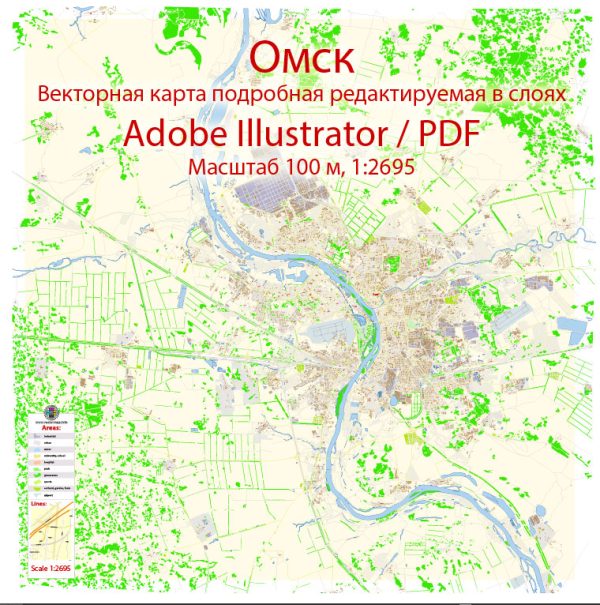Omsk, located in southwestern Siberia, Russia, has a rich history of urban development that dates back to the 18th century. Here is a brief overview of the city’s history:
- Foundation and Early Years (1716-1800):
- Omsk was founded in 1716 as a fortress at the confluence of the Om and Irtysh Rivers. It served as a strategic outpost and administrative center for the expanding Russian Empire.
- The fortress played a crucial role in defending the Russian territories against nomadic tribes and served as a base for further exploration and expansion into Siberia.
- Omsk grew as a trade and administrative center during the 18th century, attracting settlers and merchants.
- Imperial Period (1800-1917):
- In the 19th century, Omsk continued to develop as an important regional center. It became the capital of Western Siberia and later the administrative center of the vast Siberian Cossack Host.
- The Trans-Siberian Railway reached Omsk in the late 19th century (1894), connecting the city to the rest of the Russian Empire and stimulating economic growth.
- Omsk became a cultural and educational hub, with the establishment of schools, theaters, and other cultural institutions.
- Soviet Era (1917-1991):
- The Russian Revolution of 1917 brought about significant changes to Omsk. The city went through periods of political and social upheaval.
- During the Russian Civil War (1918-1922), Omsk served as the capital of the anti-Bolshevik White Movement under Admiral Alexander Kolchak. After the defeat of the White forces, Omsk fell under Soviet control.
- The city experienced industrialization and modernization under Soviet rule, with the establishment of factories and the development of infrastructure.
- World War II and Post-War Period:
- Omsk played a role in supporting the Soviet Union during World War II. The city contributed to the war effort through industrial production and as a military base.
- After the war, Omsk continued to grow as an industrial center, with a focus on heavy machinery, petrochemicals, and other key industries.
- Contemporary Period (1991-Present):
- With the collapse of the Soviet Union in 1991, Omsk, like many other Russian cities, faced economic challenges and a transition to a market economy.
- Omsk has continued to be an important regional center with a diverse economy, including manufacturing, agriculture, and energy production.
- The city has seen ongoing urban development, with the construction of modern buildings, infrastructure improvements, and efforts to enhance the quality of life for its residents.
Throughout its history, Omsk has evolved from a frontier fortress to a major industrial and cultural center in Siberia. Its strategic location, at the crossroads of trade routes and transportation networks, has contributed to its significance in the region. Today, Omsk remains a key city in Siberia, with a mix of historical and modern elements shaping its urban landscape.


 Author: Kirill Shrayber, Ph.D.
Author: Kirill Shrayber, Ph.D.